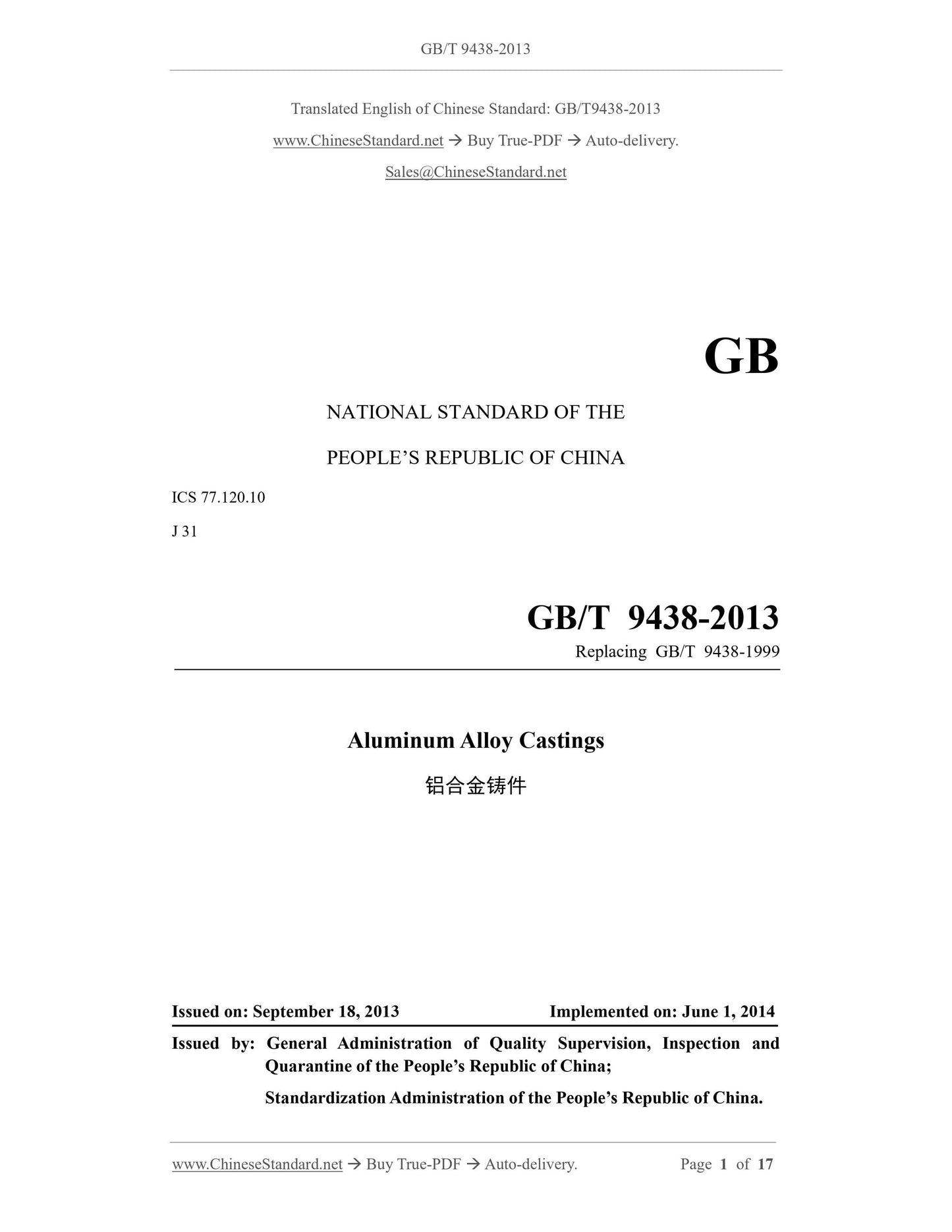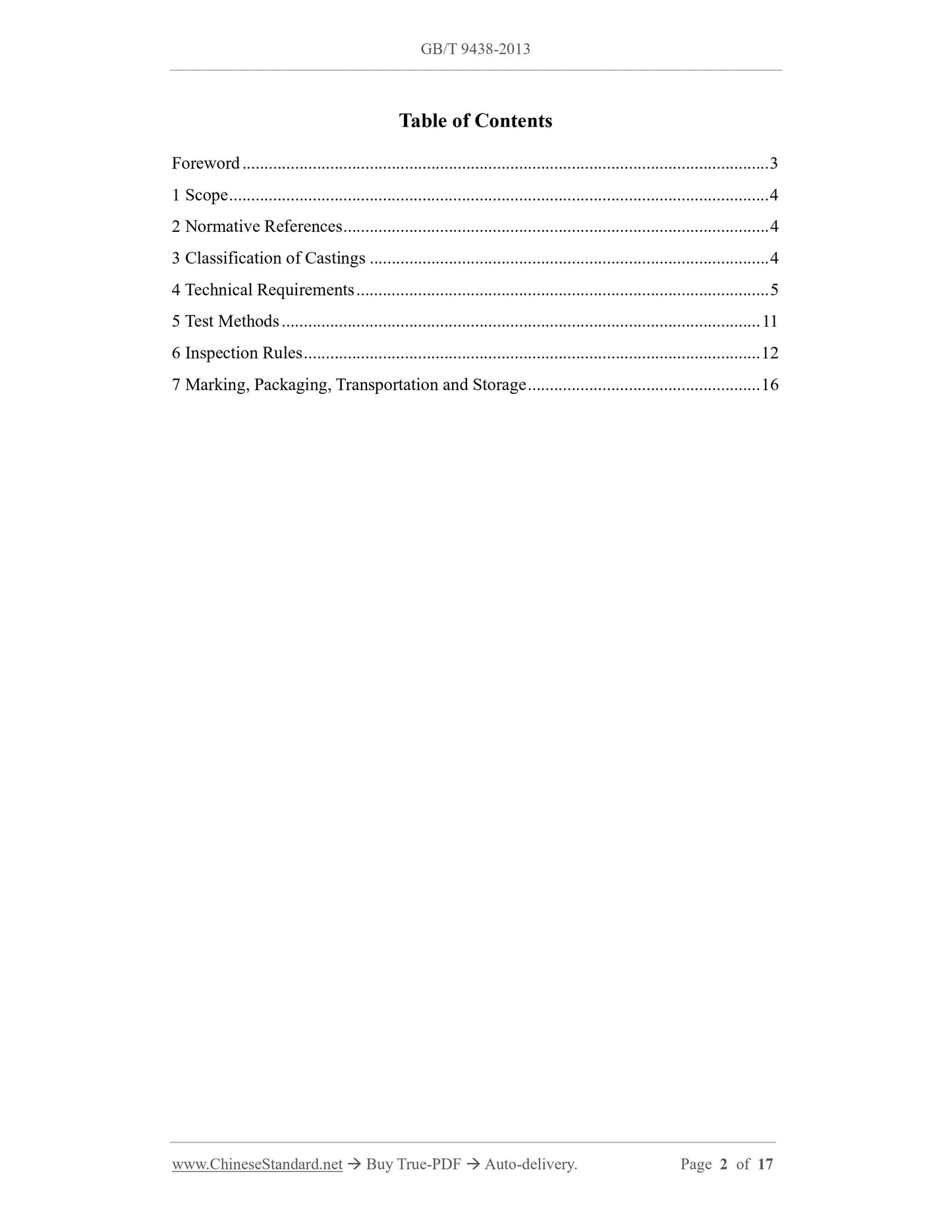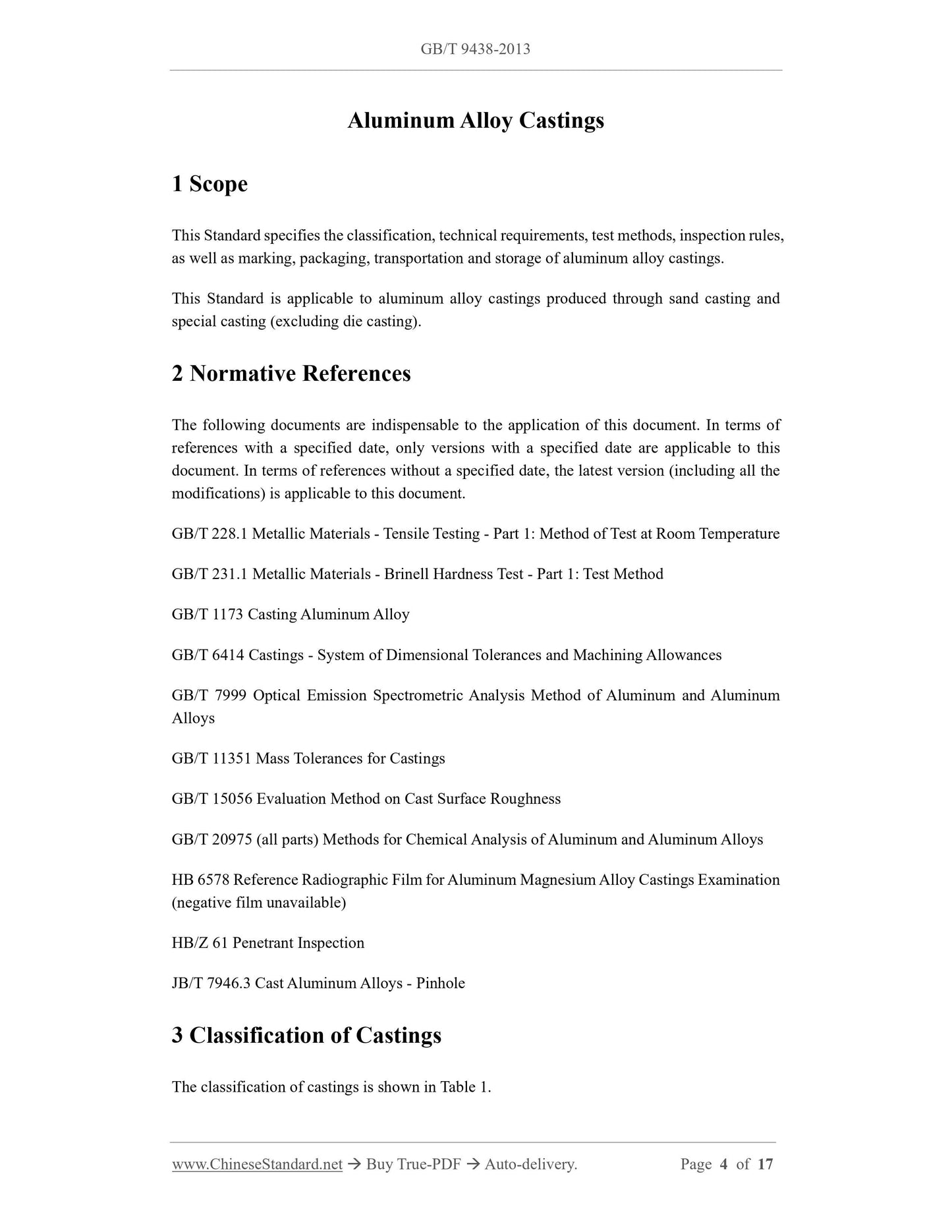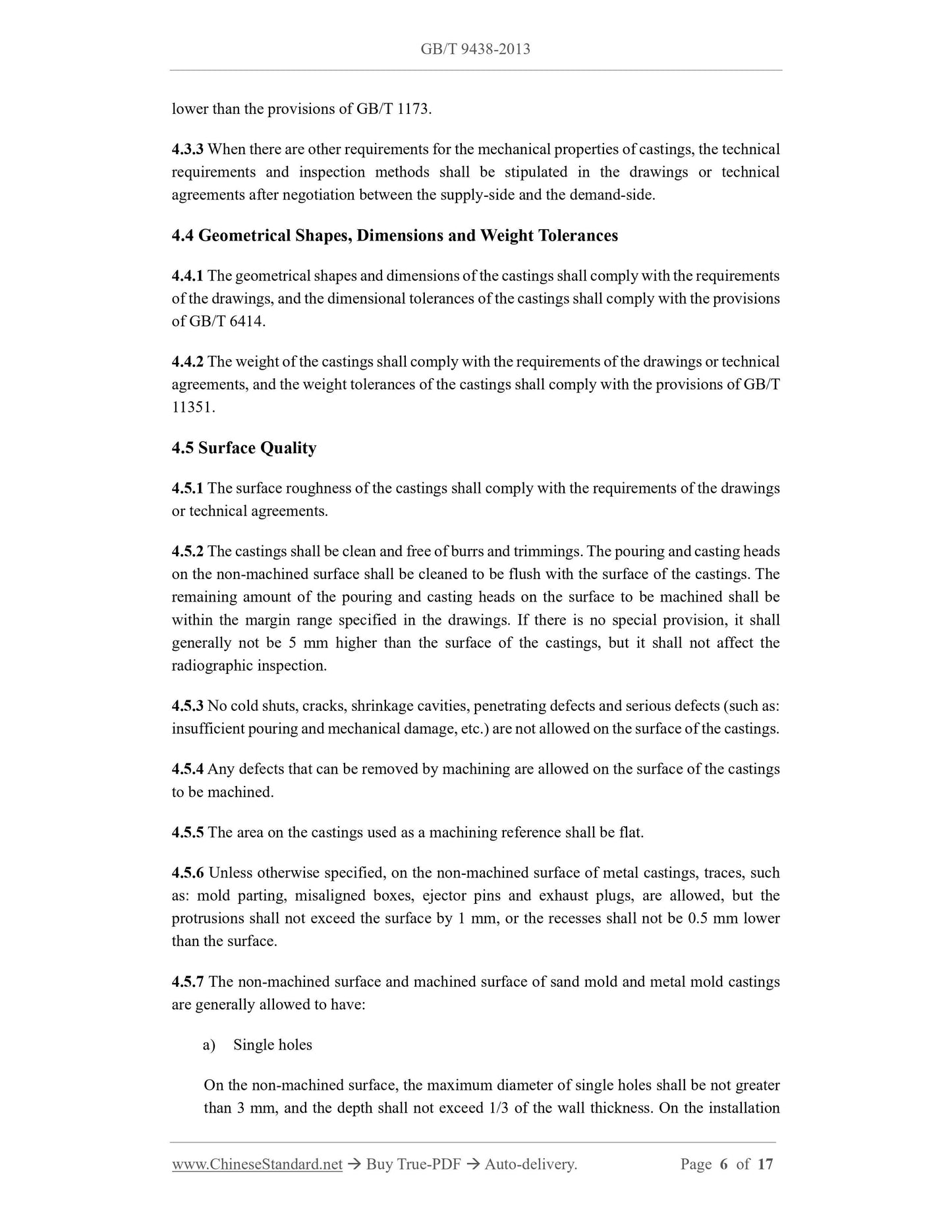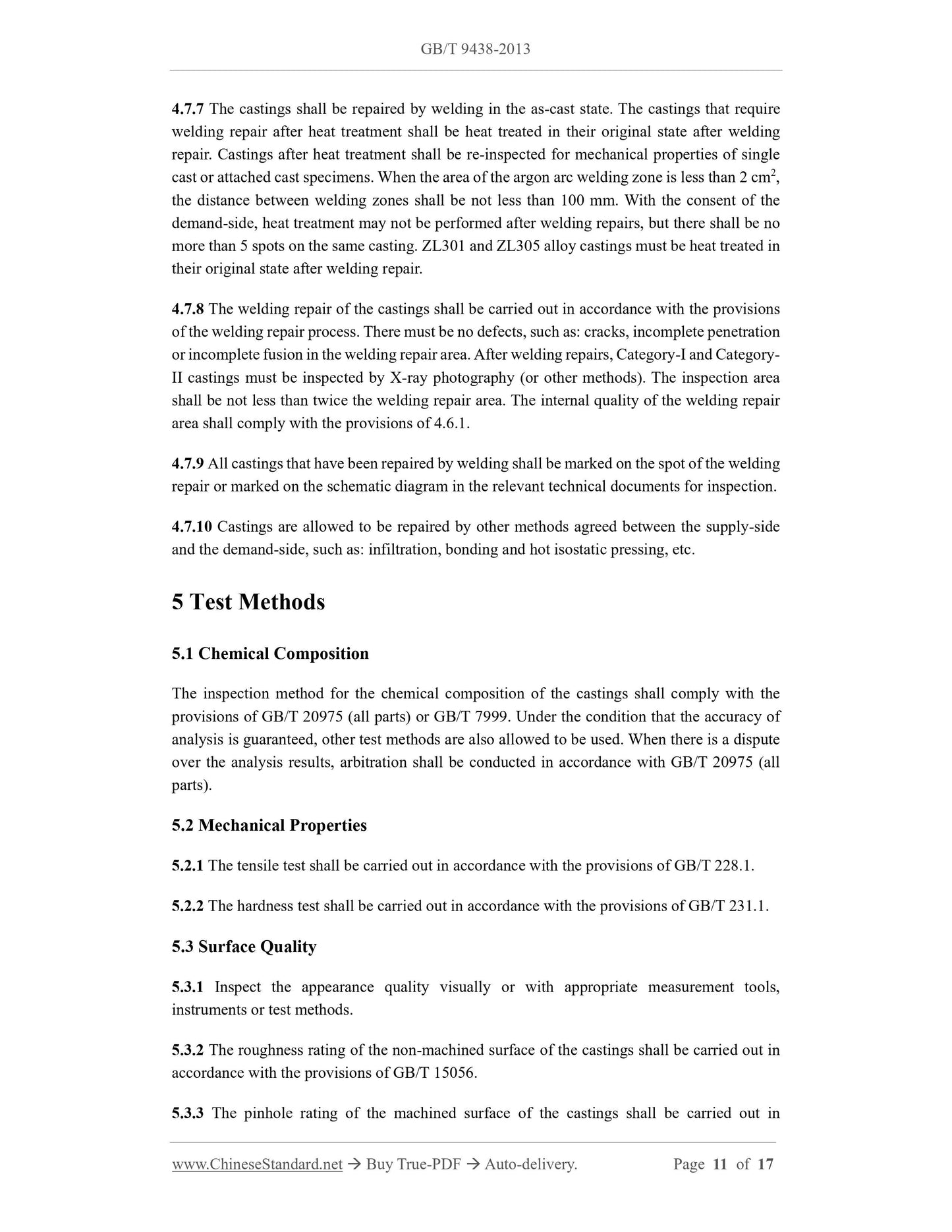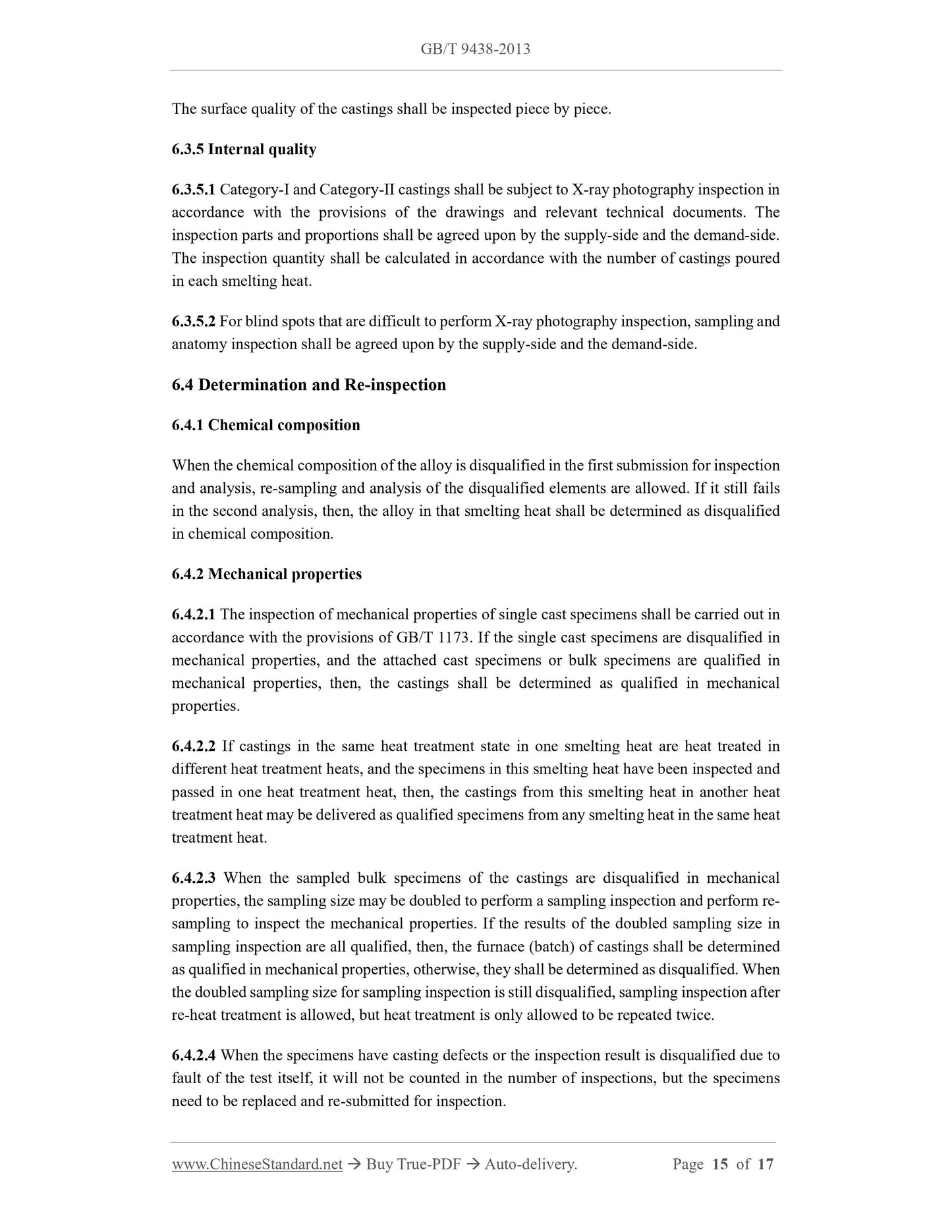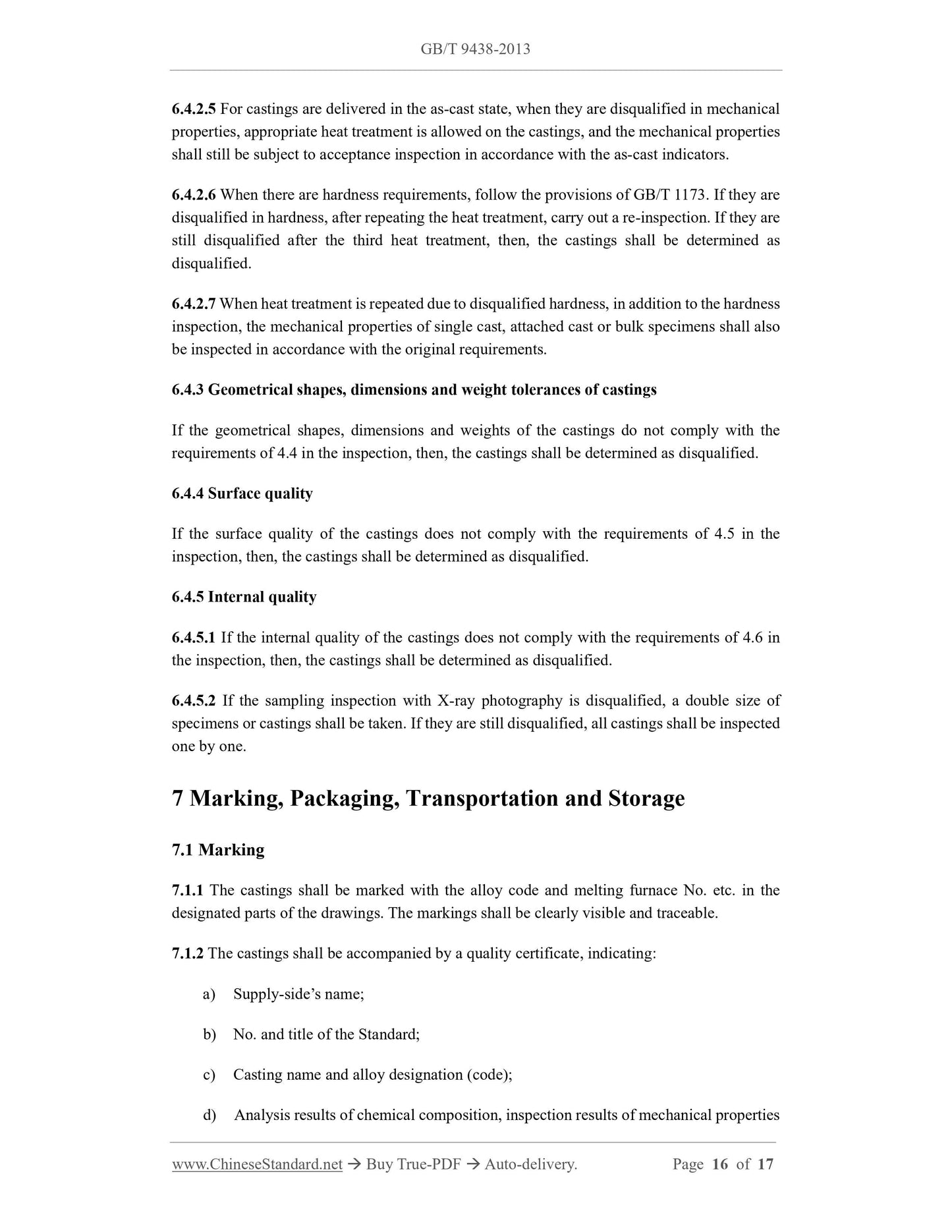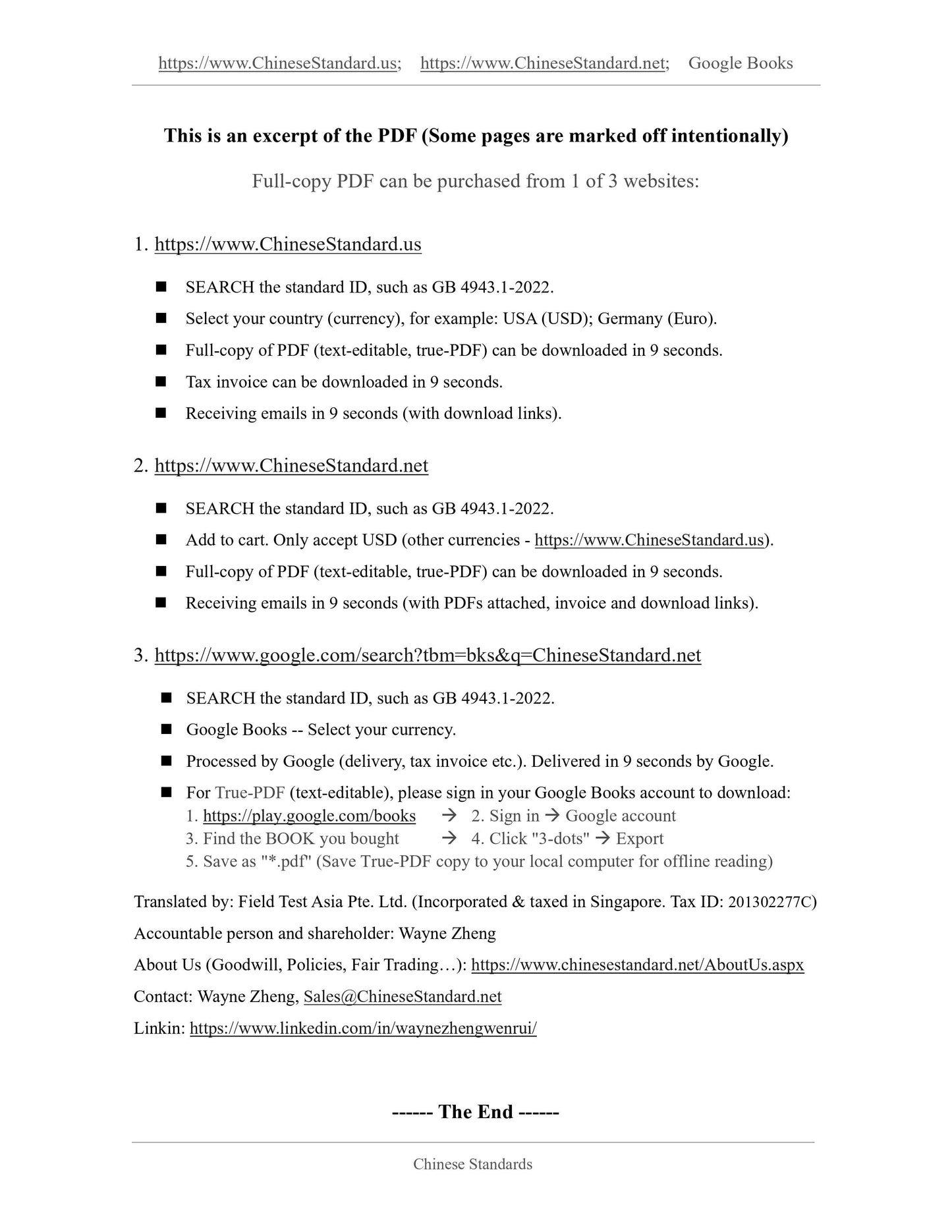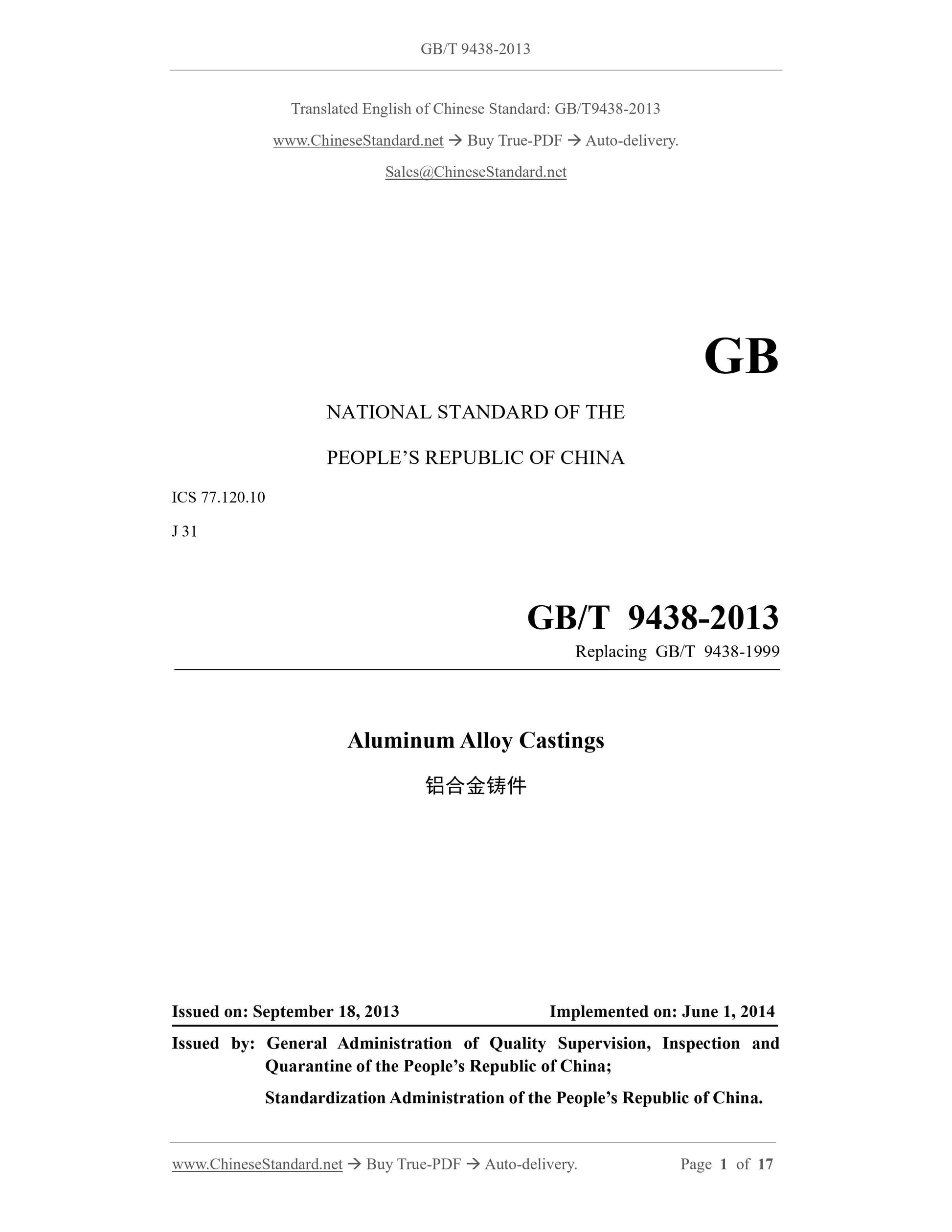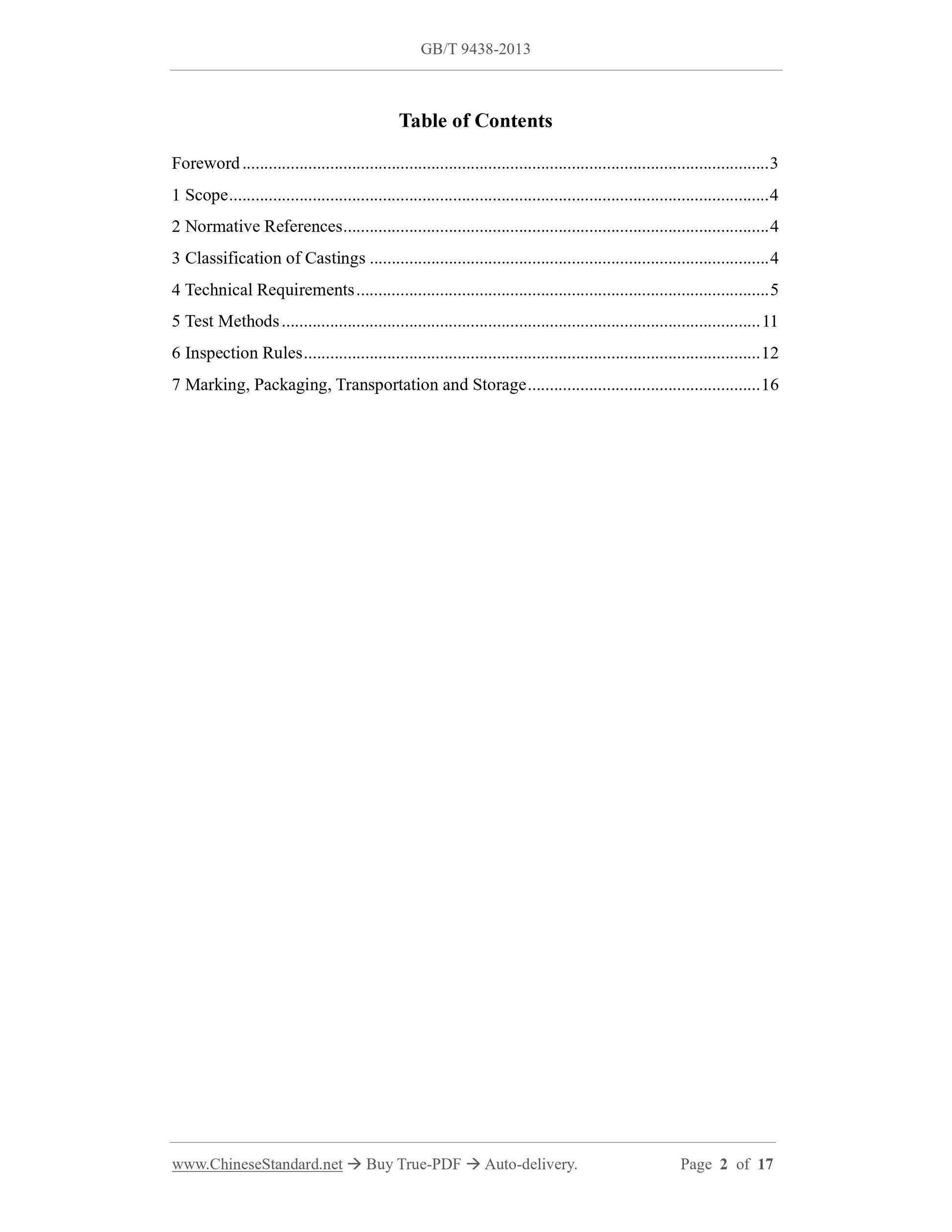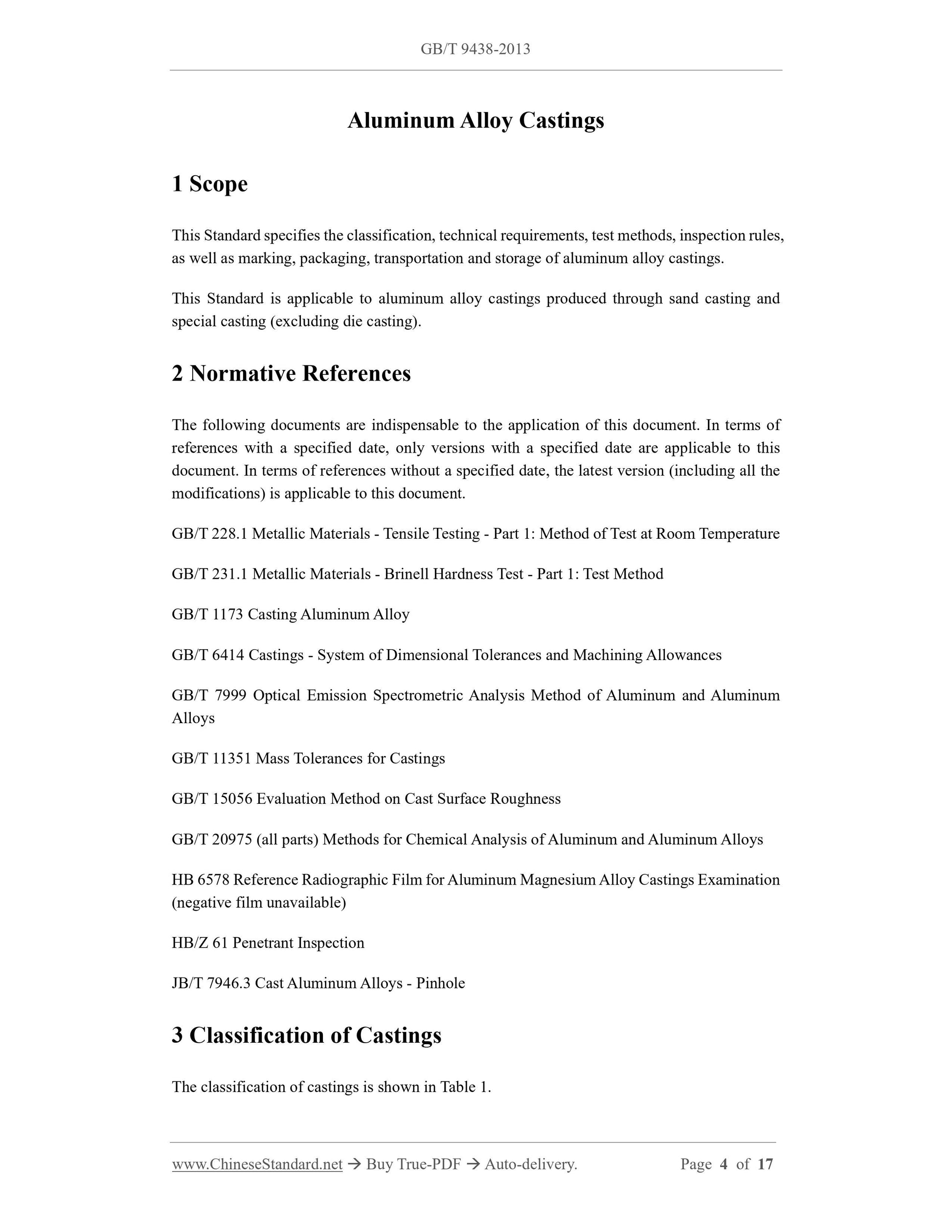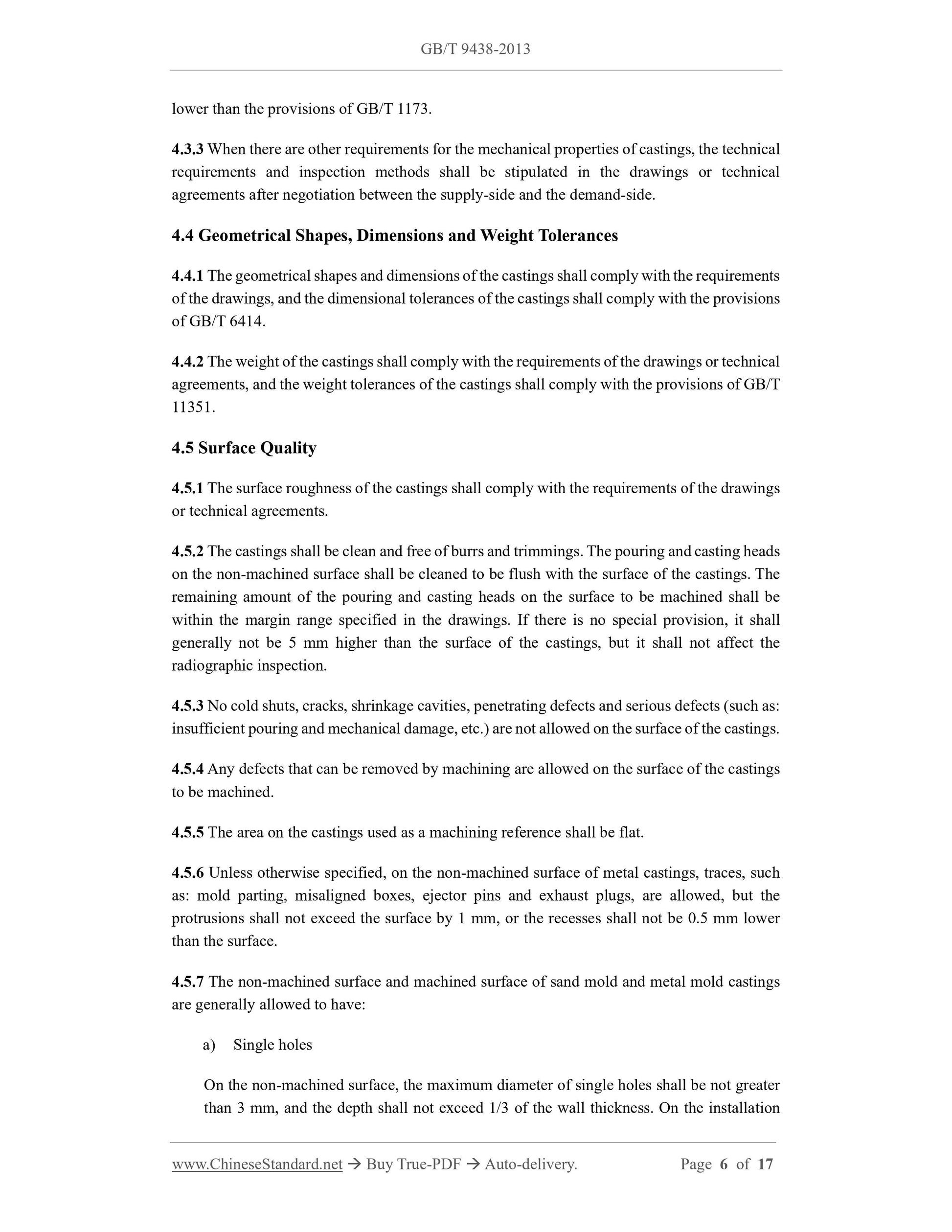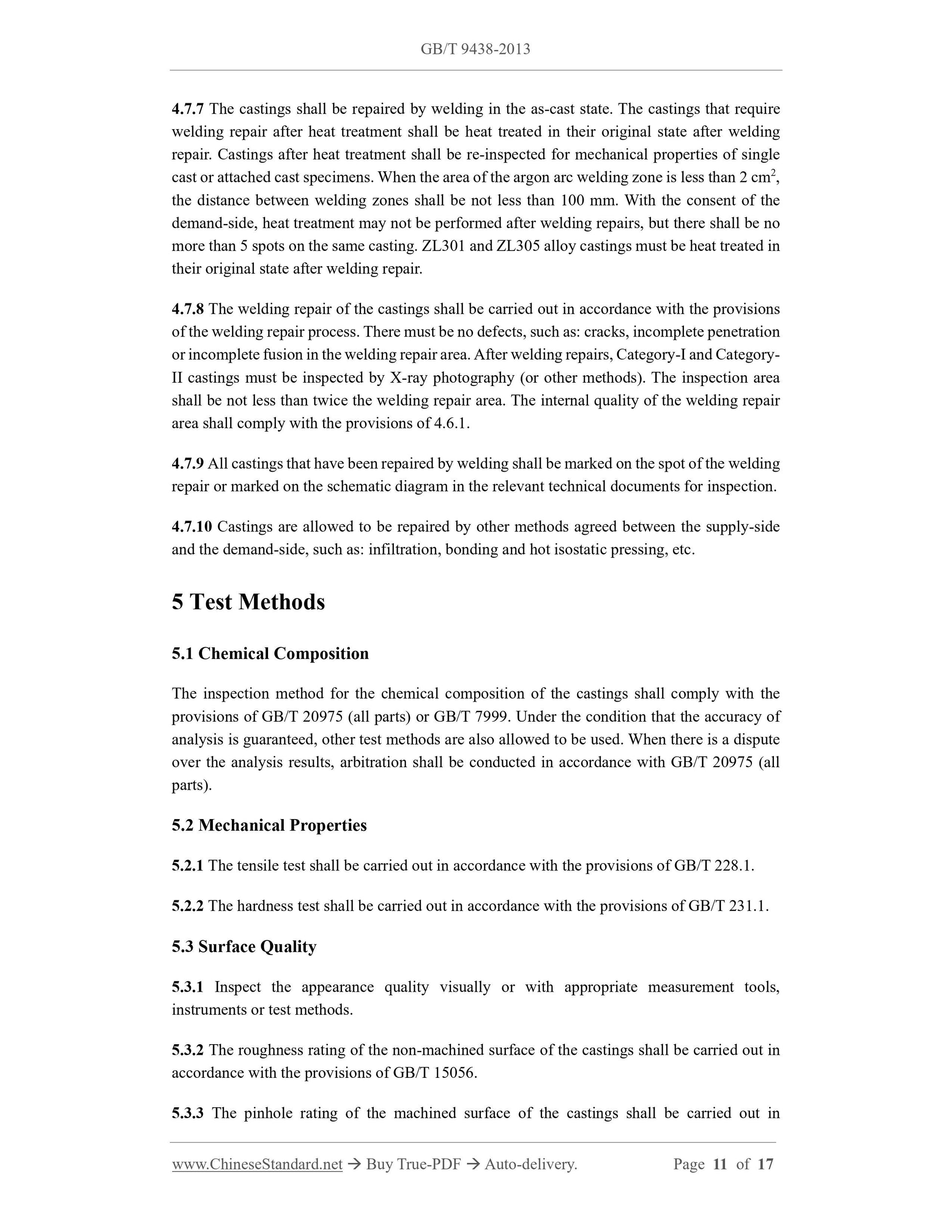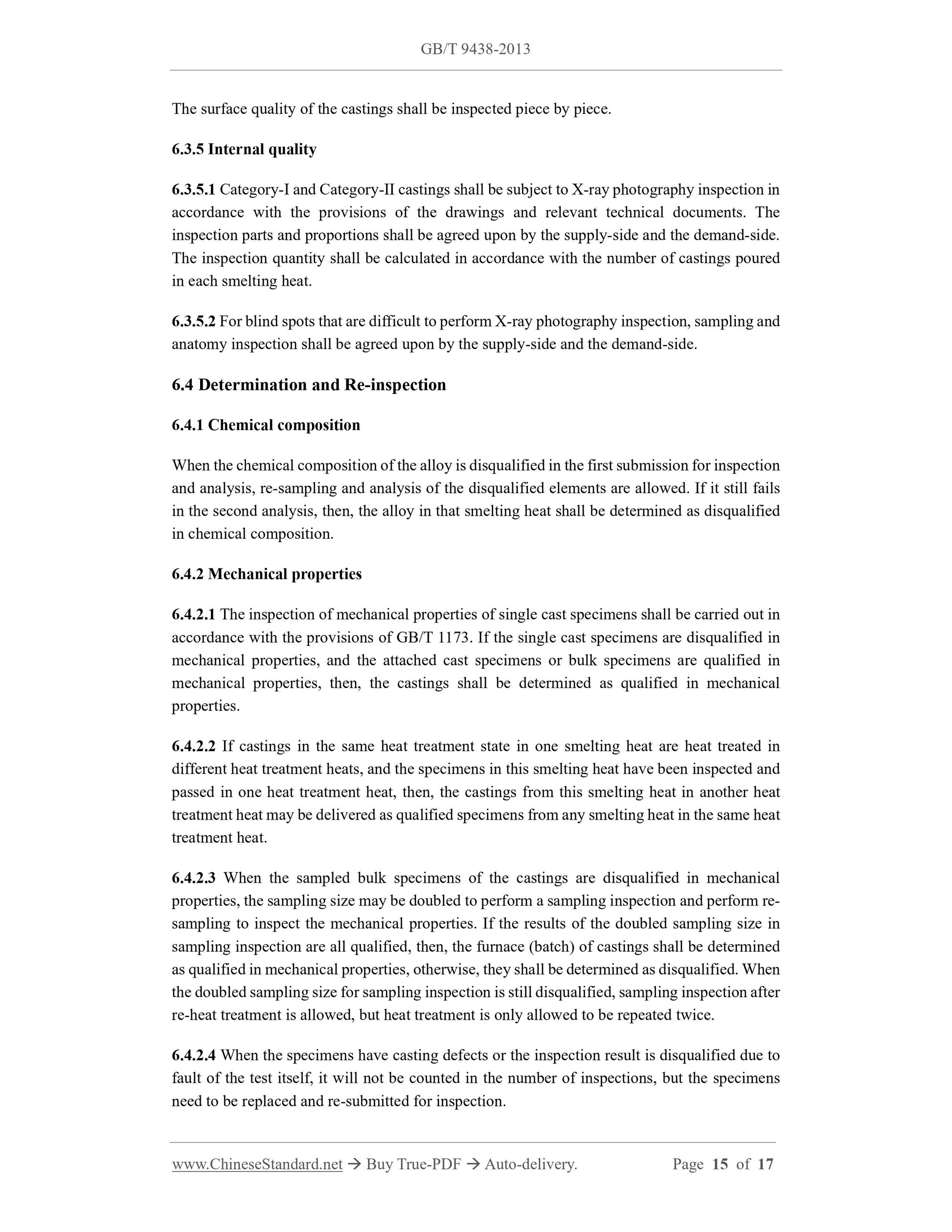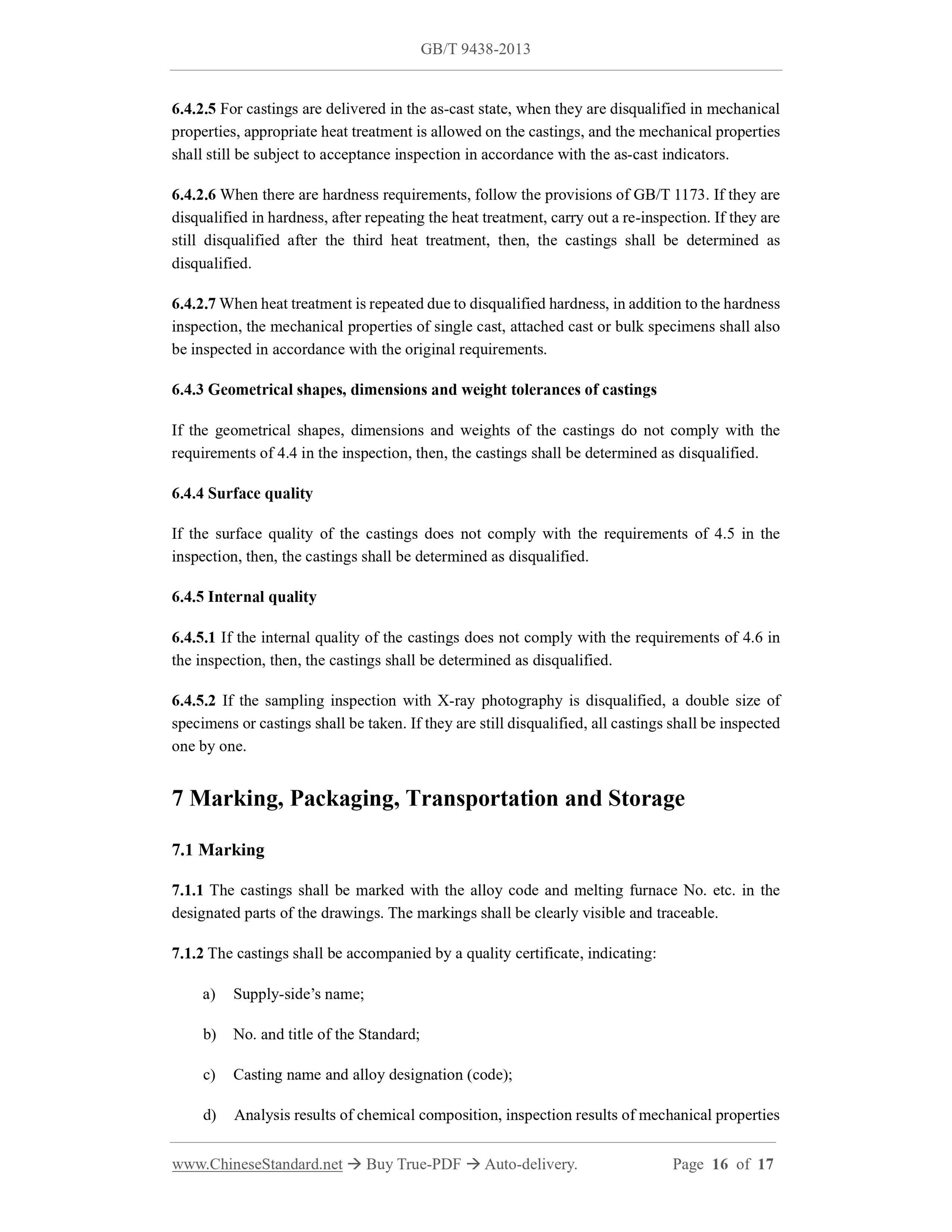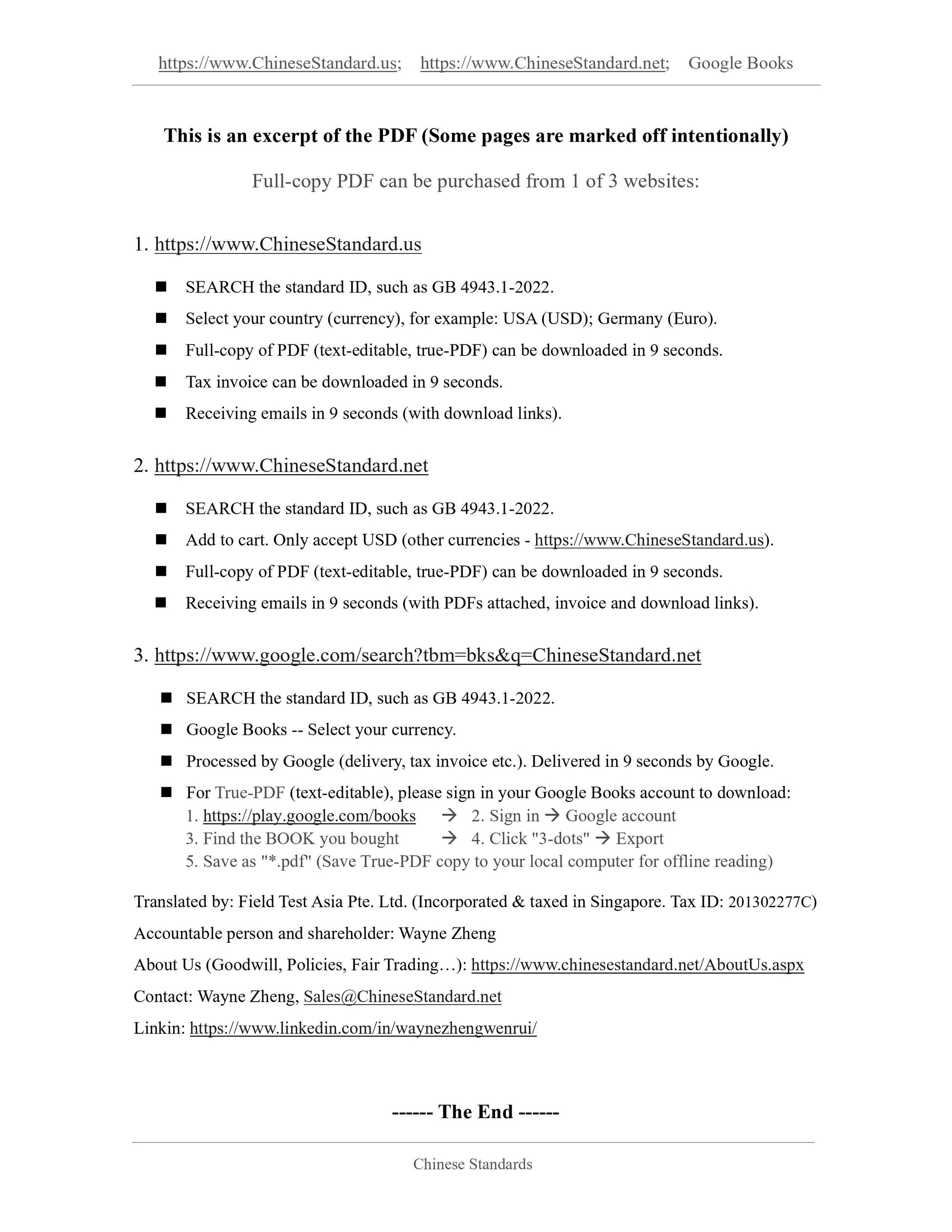1
/
of
8
www.ChineseStandard.us -- Field Test Asia Pte. Ltd.
GB/T 9438-2013 English PDF (GB/T9438-2013)
GB/T 9438-2013 English PDF (GB/T9438-2013)
Regular price
$185.00
Regular price
Sale price
$185.00
Unit price
/
per
Shipping calculated at checkout.
Couldn't load pickup availability
GB/T 9438-2013: Aluminum alloy castings
Delivery: 9 seconds. Download (and Email) true-PDF + Invoice.Get Quotation: Click GB/T 9438-2013 (Self-service in 1-minute)
Newer / historical versions: GB/T 9438-2013
Preview True-PDF
Scope
This Standard specifies the classification, technical requirements, test methods, inspection rules,as well as marking, packaging, transportation and storage of aluminum alloy castings.
This Standard is applicable to aluminum alloy castings produced through sand casting and
special casting (excluding die casting).
Basic Data
| Standard ID | GB/T 9438-2013 (GB/T9438-2013) |
| Description (Translated English) | Aluminum alloy castings |
| Sector / Industry | National Standard (Recommended) |
| Classification of Chinese Standard | J31 |
| Classification of International Standard | 77.120.10 |
| Word Count Estimation | 11,185 |
| Older Standard (superseded by this standard) | GB/T 9438-1999 |
| Quoted Standard | GB/T 228.1; GB/T 231.1; GB/T 1173; GB/T 6414; GB/T 7999; GB/T 11351; GB/T 15056; GB/T 20975.1; GB/T 20975.2; GB/T 20975.3; GB/T 20975.4; GB/T 20975.5; GB/T 20975.6; GB/T 20975.7; GB/T 20975.8; GB/T 20975.9; GB/T 20975.10; GB/T 20975.11; GB/T 20975.12; GB/ |
| Regulation (derived from) | National Standards Bulletin No. 19 of 2013 |
| Issuing agency(ies) | General Administration of Quality Supervision, Inspection and Quarantine of the People's Republic of China, Standardization Administration of the People's Republic of China |
| Summary | This standard specifies: aluminum alloy castings classification, technical requirements, test methods, inspection rules and signs, packaging, transport and storage. This standard applies to: using sand casting and special casting (without casting) product |
Share
